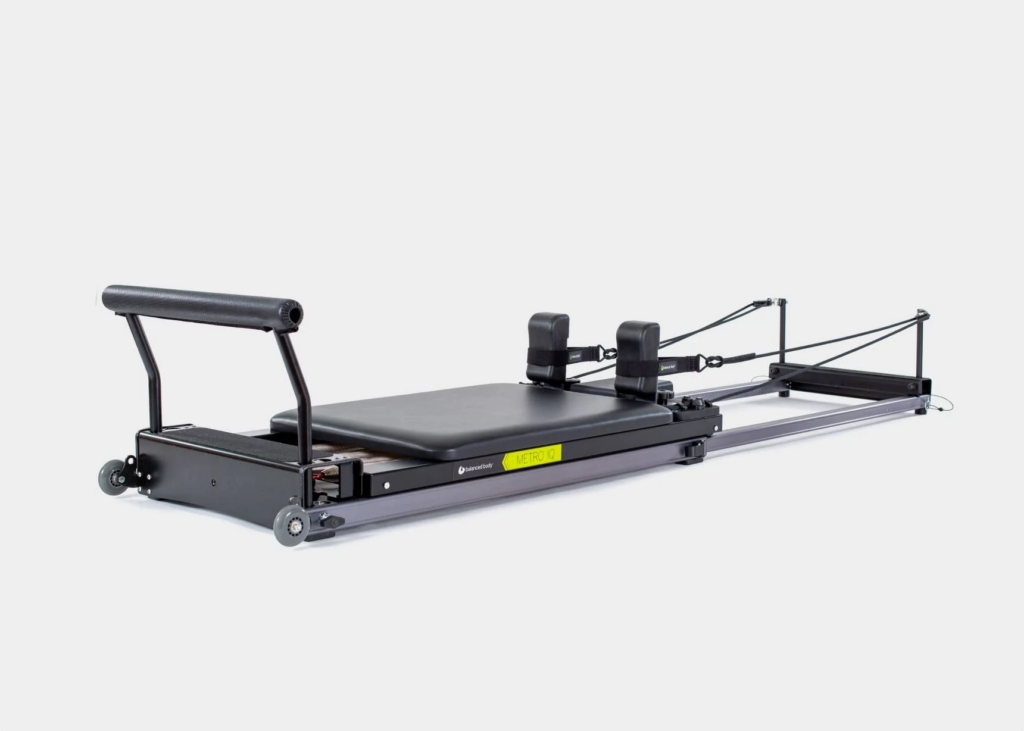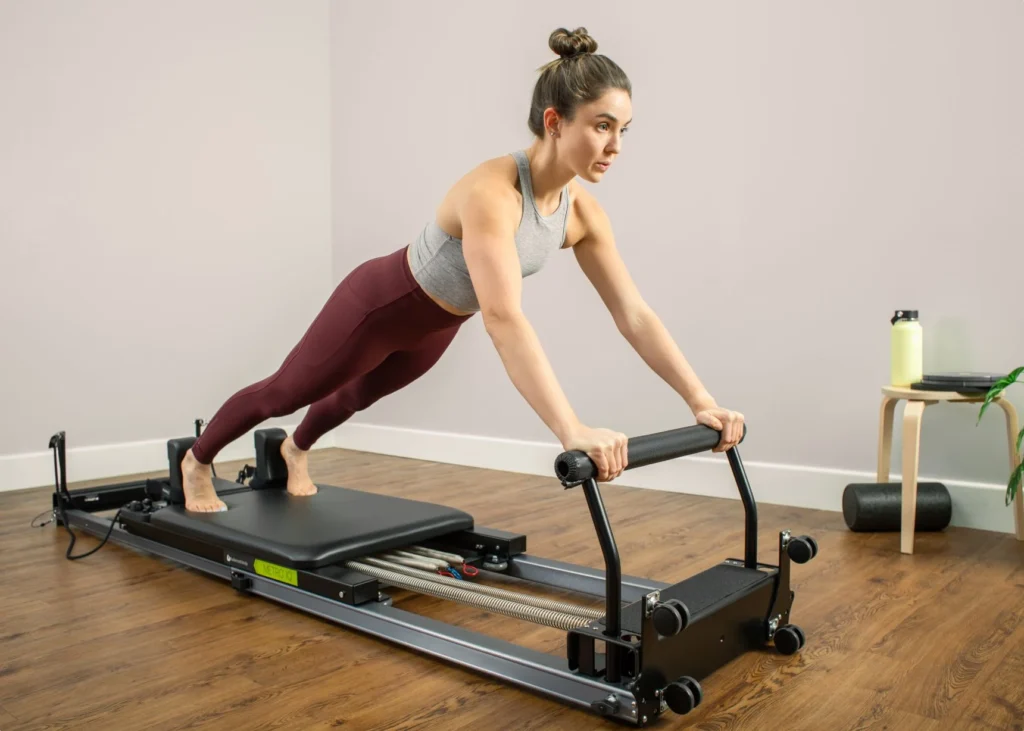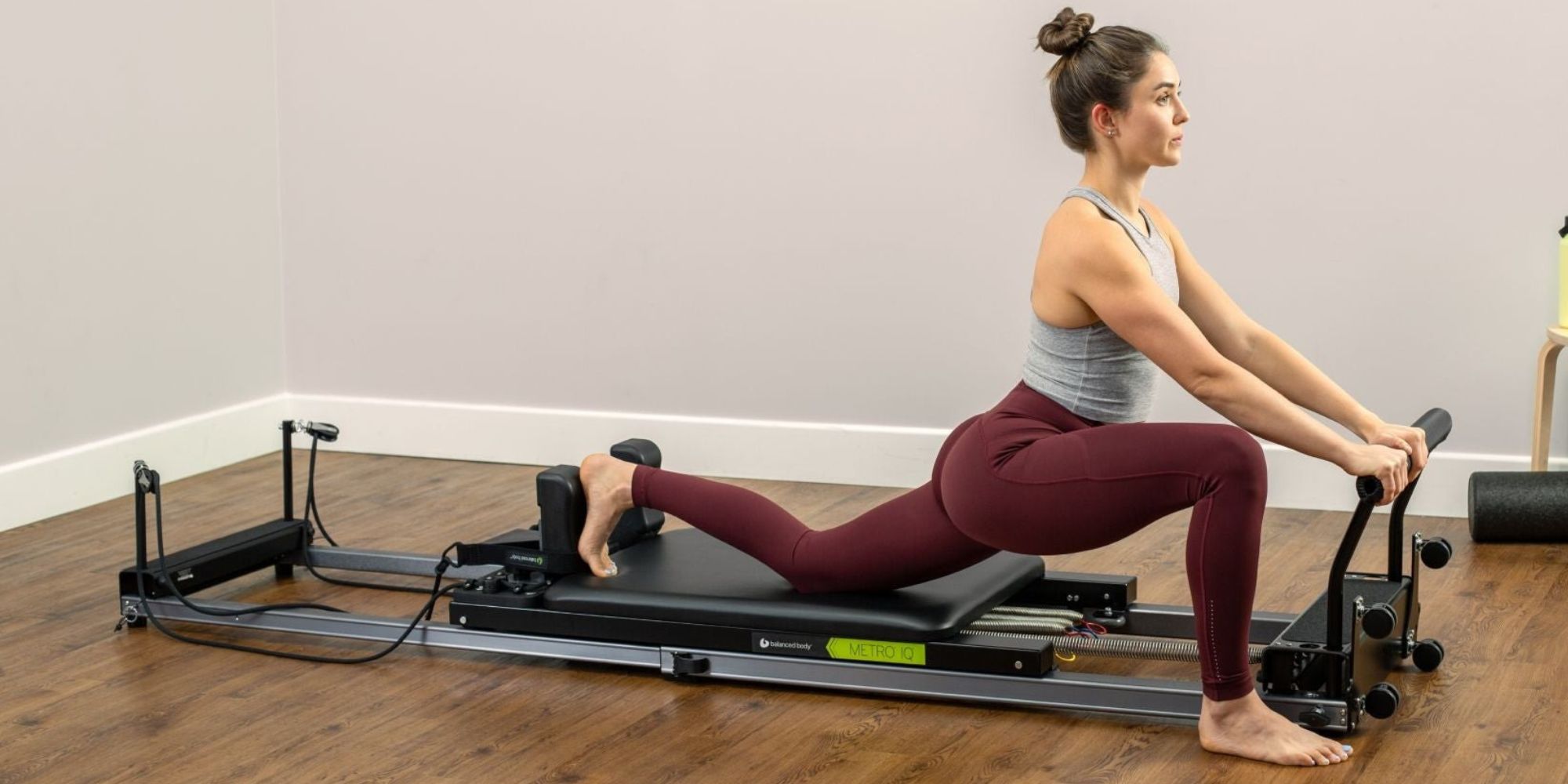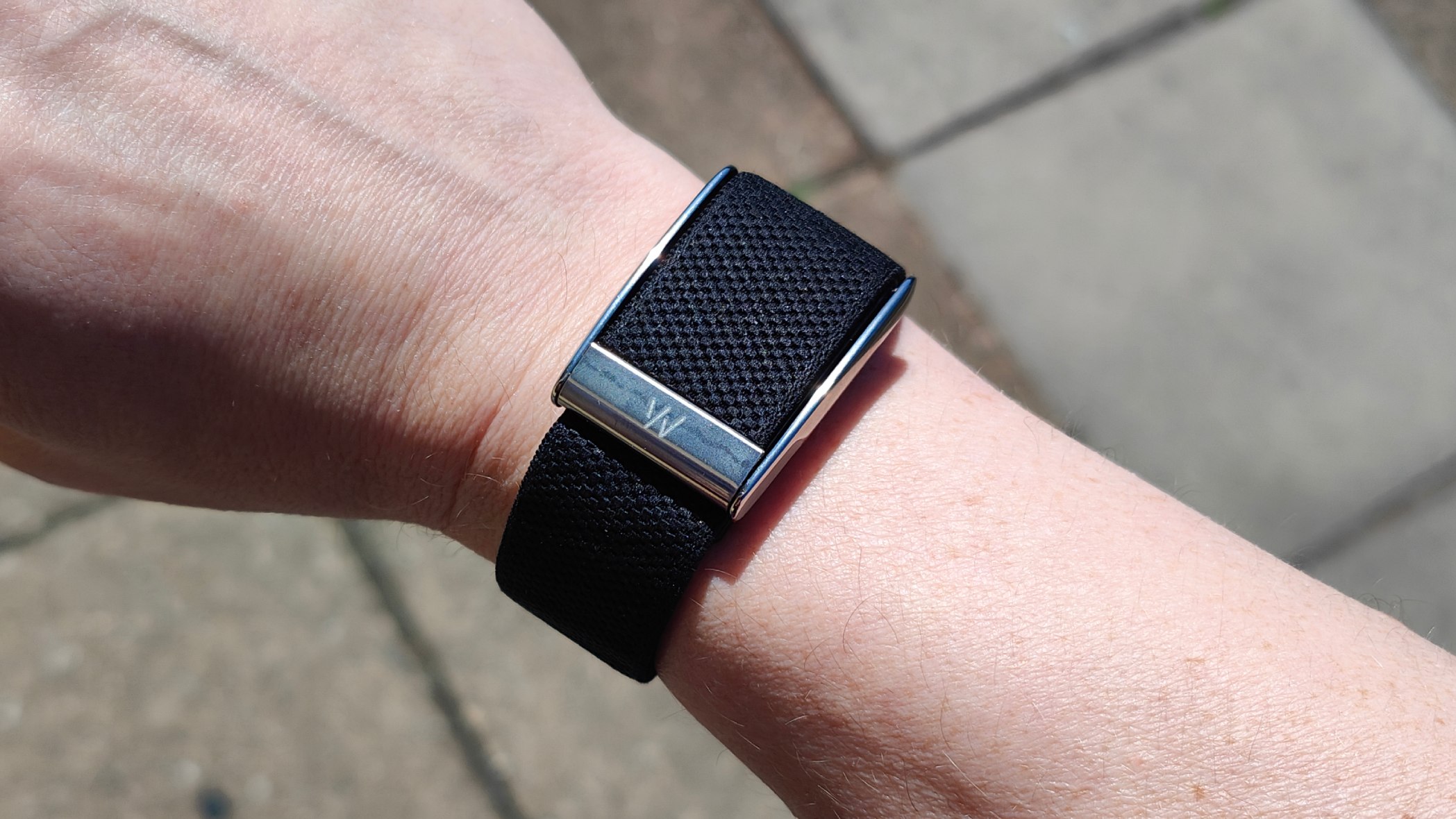Balanced Body’s Metro IQ reformer brings studio-grade Pilates into the home with a sleek, foldable design, ideal for small spaces and serious practitioners seeking convenience without compromising quality
All products featured on Athletech News are independently selected by our editors. However, when you buy something through our retail links, we may earn an affiliate commission.
For many, at-home Pilates practice has seemed out of reach due to price and space considerations. But Balanced Body’s foldable reformer is marketed as a sleek, space-saving way to bring your practice home. Can a compact piece of equipment really replicate the studio experience?
For years, my at-home efforts consisted of mat work and bodyweight stretches squeezed onto my floor. I had assumed that owning a reformer would require more space (and money) than I could justify. Then I came across the Metro IQ Reformer by Balanced Body, a reformer designed specifically for the home, with studio-level mechanics and the ability to collapse for storage.
At $2,295, the Metro IQ is a premium investment. But with the premium price of Pilates classes, could the at-home reformer be a good investment? Athletech News tested the Metro IQ over several months to evaluate its strengths, limitations and whether it’s worth the price tag.
Background
Balanced Body is one of the most well-known names in Pilates equipment, with a long history of supplying reformers to professional studios. The Metro IQ launched as part of its effort to reach the growing at-home fitness market.
The Metro IQ has a telescoping metal frame, a patented design that allows it to extend to a full studio length during workouts (98″) and collapse to just 62″ for storage. It includes a soft yet firm vinyl-padded carriage, springs, a jumpboard and a rope system for quieter, smoother use. It ships almost fully assembled and includes your choice of wheelbarrow or upright caster wheels, depending on your preferred storage method (under the bed or upright against a wall).

Balanced Body Metro IQ Reformer, $2,295
Pros
The Metro IQ’s space-saving design makes it ideal for apartments or shared living spaces. With a quick release of two side locks, it shortens for storage and can roll under a bed or stand in a closet, eliminating the need for a dedicated exercise space.
Once extended, the Metro IQ delivers studio-level performance with a smooth and silent carriage ride. The eight-wheel track system creates no noticeable resistance and the Signature Springs (3 red, 1 blue, 1 yellow) provide a great range of resistance options that match what you’d expect in a professional setting. It took a little bit of time to learn the spring combinations, but it soon became second nature.
Assembly and operation are remarkably user-friendly. Most of the reformer arrives pre-assembled, while spring changes, rope adjustments and footbar modifications are all intuitive enough to master quickly, even for beginners.
Premium materials elevate the entire experience. The hybrid padded foam and faux leather upholstery feel just as comfortable as those I’ve used in boutique classes, with plenty of padding and no seams on the track. The adjustable footbar and headrest allow for a customized feel depending on your height and exercise. The ropes were a welcome upgrade from the metal clips I was used to, quieter, softer and more intuitive to adjust, giving the reformer a high-end feel and function that rivals equipment found in boutique studios. It’s also a small win, but so nice to be able to do Pilates barefoot, not needing the hygienic grippy socks.
Unlike most reformers that sell accessories separately, the Metro IQ includes a jumpboard, which expands workout possibilities, especially for those who enjoy cardio-focused exercises. This addition significantly increases the versatility of your home practice.
Access to Balanced Body’s free online workout library provides valuable resources that make it easy to explore new sequences and reinforce proper technique. This benefit helps bridge the gap between studio instruction and home practice.
For those with flexible spending accounts, the Metro IQ is FSA/HSA eligible. While not covered by insurance, this option can offset costs for some users, making professional-grade equipment more accessible.
One unexpected benefit: I started using it casually throughout the day. Sometimes I’d lie down for a stretch between calls or add a few leg presses while watching TV. It quickly became naturally integrated into my daily routine.

Cons
The Metro IQ has limited accessory compatibility and does not support the addition of a Tower or Legs, which may restrict progression for advanced users seeking to expand their practice over time.
Design customization is limited as the Metro IQ is only available in one color (black). This lack of options contrasts with Balanced Body’s wooden models that offer aesthetic flexibility to match different home environments.
The warranty coverage is also just 2 years, significantly less than the 10-year warranty offered on the company’s studio-grade wooden reformers. At $2,295, the Metro IQ represents a serious financial commitment. The investment becomes even steeper considering that additional accessories like the Sitting Box and Footstrap must be purchased separately rather than included in the base package.
Despite its premium positioning, the Metro IQ lacks built-in digital programming. While Balanced Body offers free online workouts, there’s no screen or app integration directly on the device, a potential drawback for those accustomed to connected fitness experiences like Peloton or Mirror.
The reformer’s 85-pound weight and 96-inch extended length (though collapsible to 61.5 inches) may still present challenges in very small living spaces, despite its space-saving design relative to traditional reformers.
Overall, the Metro IQ Reformer successfully delivers on its promise to bring a studio-quality Pilates experience into the home and it does so without requiring a spare room or permanent gym setup. For users who practice regularly and want the convenience of a reformer at home, this model stands out for its professional-grade ride, premium materials and clever collapsibility.


















 ‘Gary Gait can do things NO ONE ELSE CAN’ | ESPN Originals
‘Gary Gait can do things NO ONE ELSE CAN’ | ESPN Originals








































